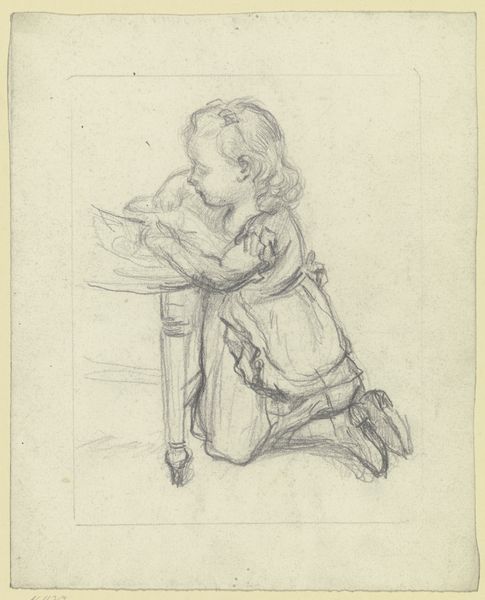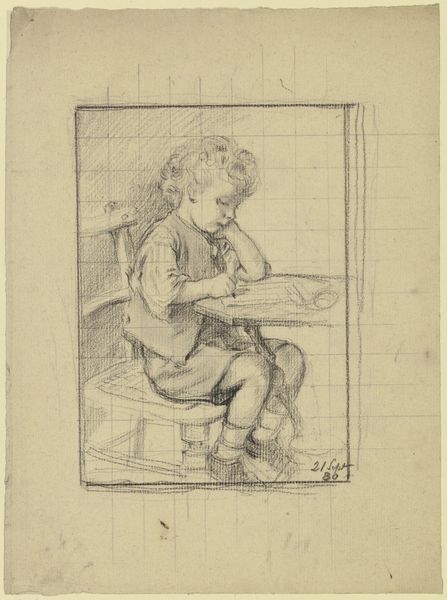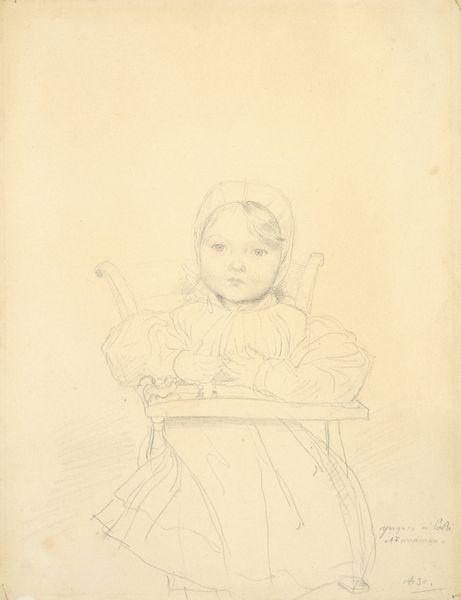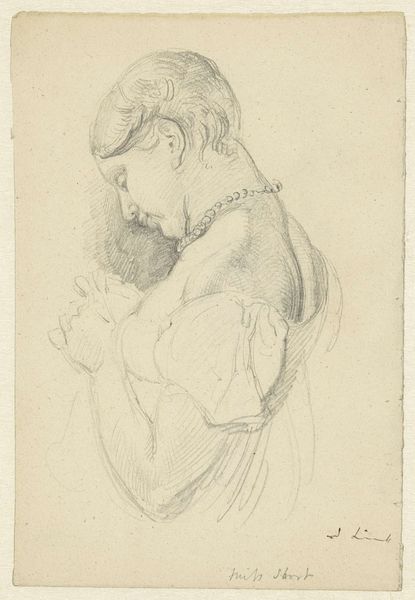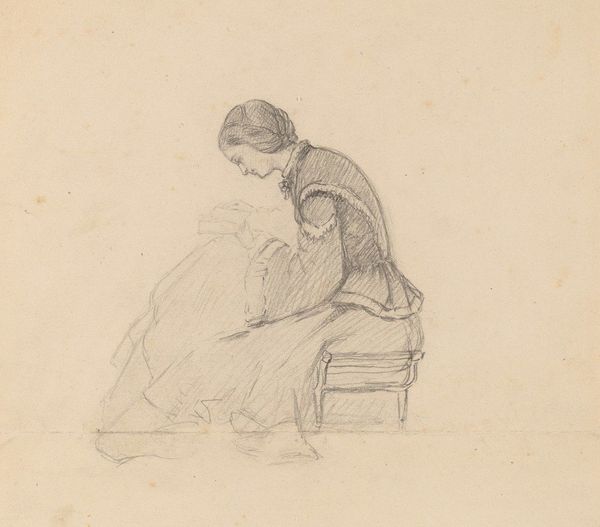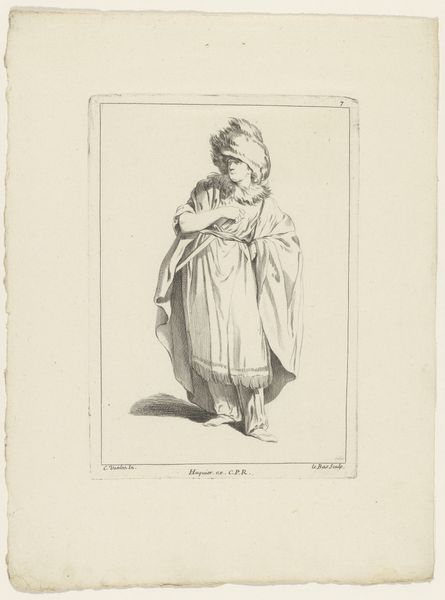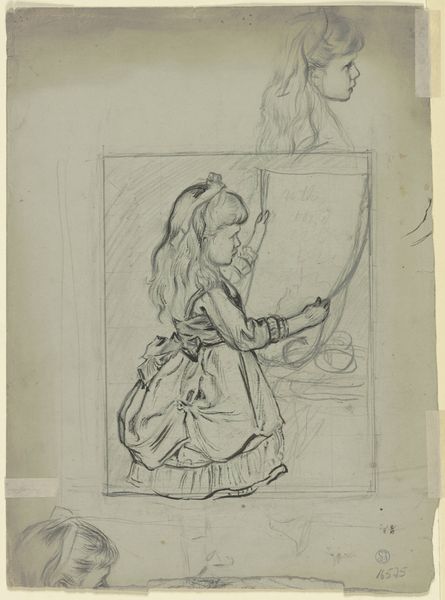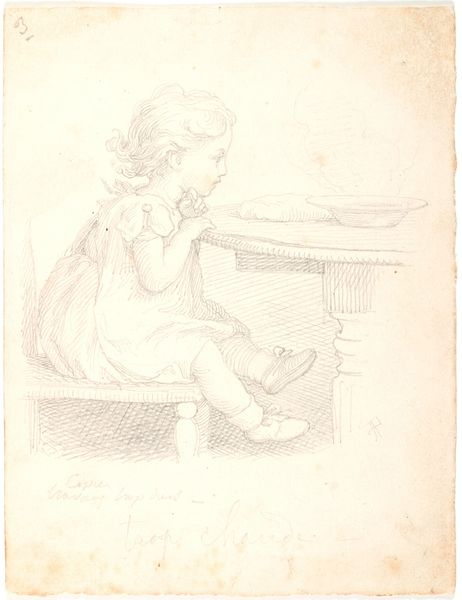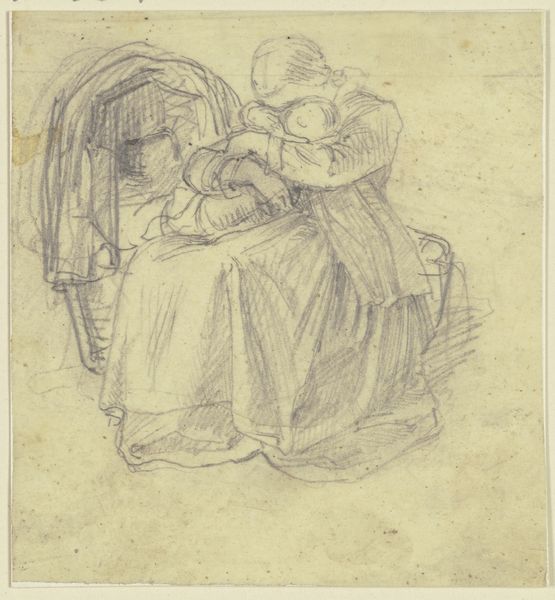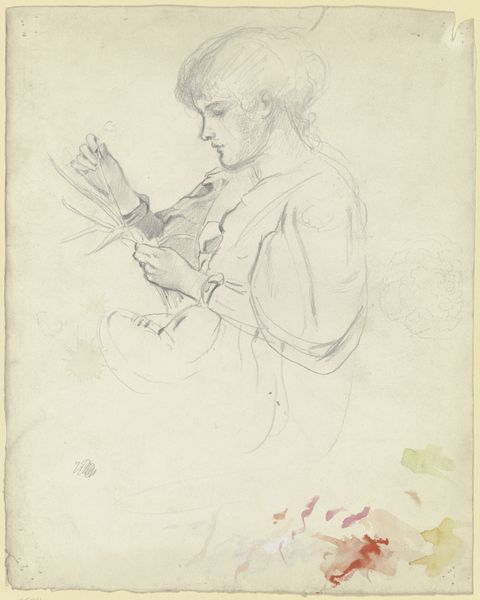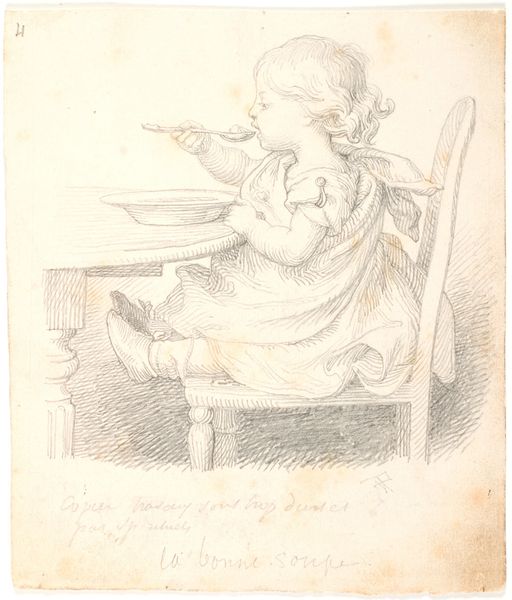
Copyright: Public Domain
Editor: This drawing, "Tea with Dolly," from 1872 by Otto Scholderer, features delicate pencil work on paper. It has this lovely, innocent quality to it. How do you interpret this drawing? Curator: The image speaks to the rising German middle class in the late 19th century. Look closely at the detail, this pencil drawing offers us a window into the material culture of the time – a snapshot, not of formal portraiture, but intimate domesticity. Editor: That’s interesting! Can you say more? Curator: Absolutely. Consider the clothing – a child's dress isn’t just cloth, it speaks of textile production and family values. The doll itself, and the miniature tea set. These weren't cheap trinkets. Think about how access to such mass-produced toys could indicate the child’s family’s social status. And look at how these mass produced elements enable social reproduction through this "tea party," an important element of feminine socialization for bourgeois girls. Editor: So it’s about the stuff? And the means through which children were taught to play with this stuff? Curator: Precisely! It questions the division between craft and industry, luxury and commodity, childhood innocence and capitalist indoctrination. This seemingly sweet drawing subtly reveals those networks of material production that underpin our everyday lives. Editor: I never thought of it that way. The economic and social realities are embedded in this little girl’s tea party! Curator: Right, that romantic surface is just that – a surface obscuring those tangible underpinnings. Art isn’t just representation; it’s evidence of social and economic activities. Editor: This reframes the way I consider artwork – moving beyond surface aesthetics into considering materials and means. Thanks!
Comments
No comments
Be the first to comment and join the conversation on the ultimate creative platform.
